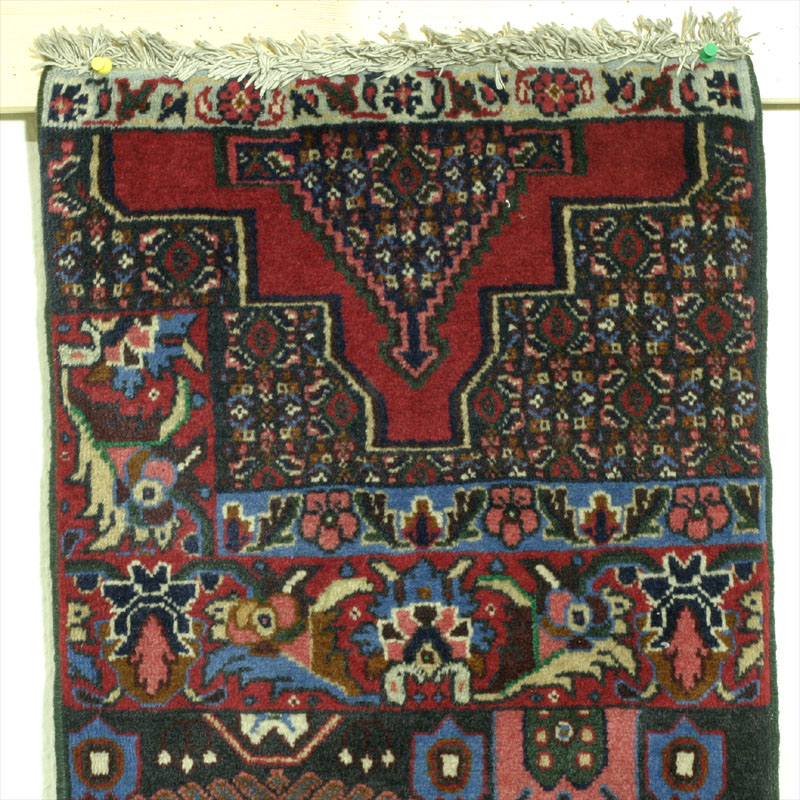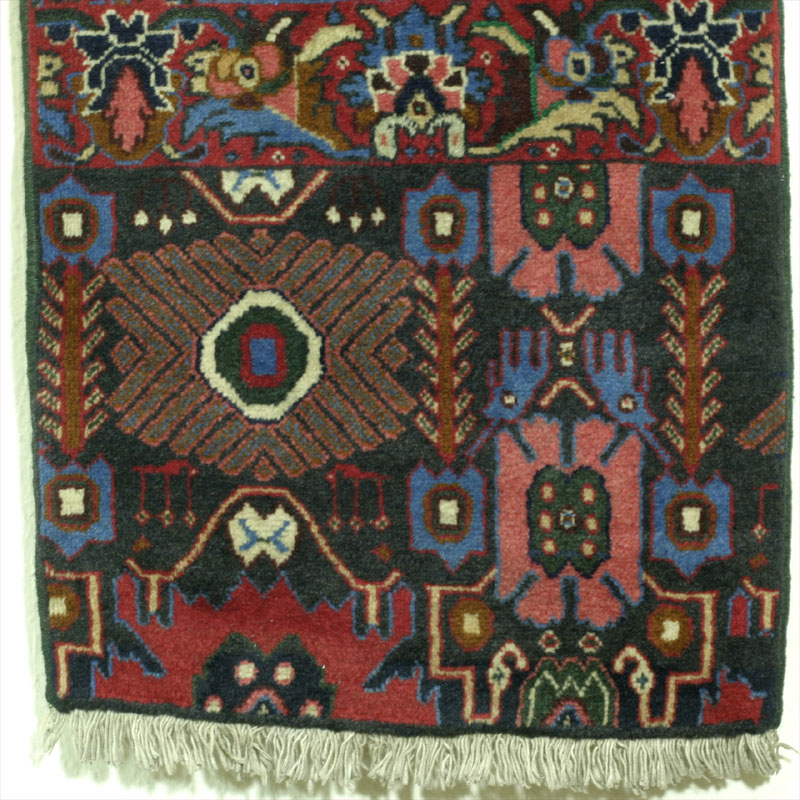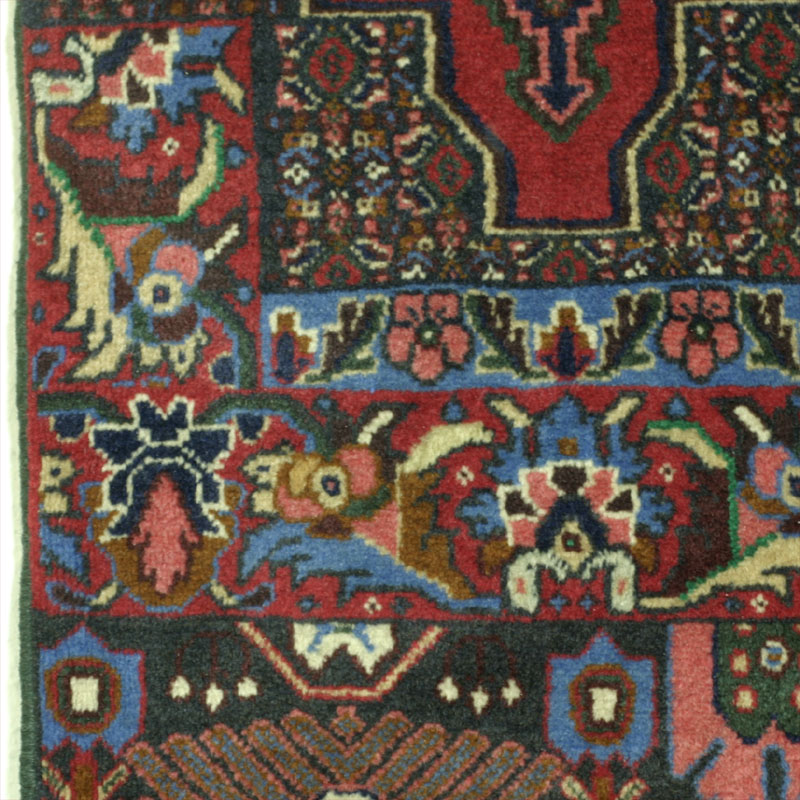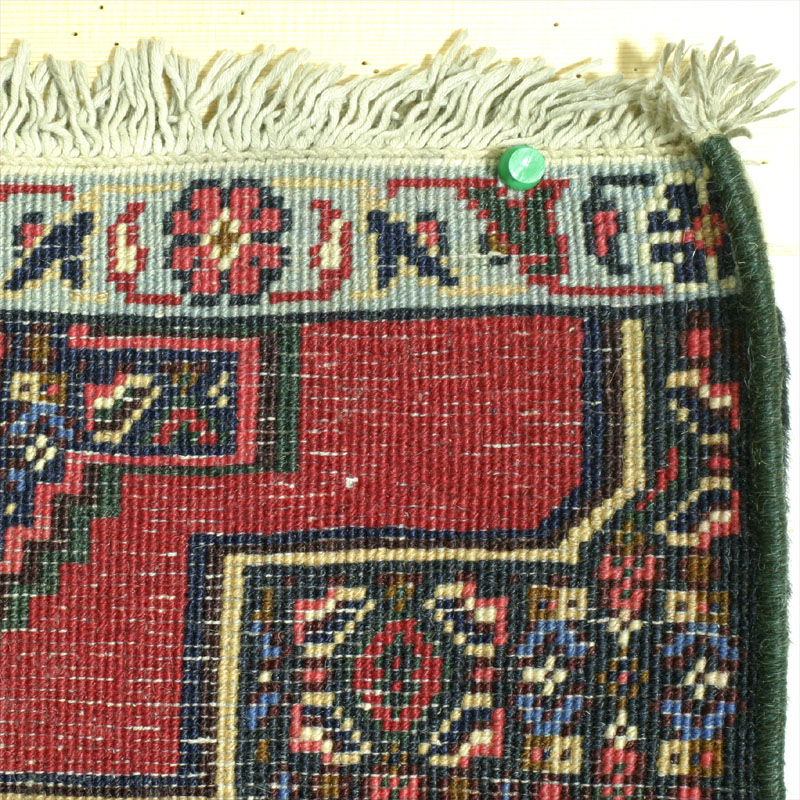This is a curious piece because it is divided into two separate sections that seem to represent very different rugs. The one half shows an all-over very small-scale and simplified Herati pattern, indicating a red medallion on a Herati field (presumably the number of steps might be increased to produce wider rugs) that in turn contains a stepped medallion (small steps this time) filled with the same Herati pattern and ending in an arrow. This variant of the herati is so small-scale that it approaches an abstract repeating noise and reminds me of the seat patterns in public transport that are designed to discourage mark-up with felt-pen in the hands of unruly youths. The border that goes to it (large scale in comparison) Ford would classify as Herati-Border, or linked alternating palmettes, "because of its frequent use in sixteenth or seventeenth century east Persian carpets". Strangely enough for a product that has a near industrial built quality, the corner turn of this border is not shown - or is this what the turn is supposed to look like?
The other part—and the fact that both very different designs are combined here in such a nonchalant way—brought me to the Ardebil tentative attribution. The vaguely Caucasian -looking repertoire of motifs and the fact that 'anything goes' seem to support Ardebil. Looking at any collection of Ardebil rugs, you are surprised that they span such a range— and at the same time, they all seem to have this intangible angular and airless feel about them. Some look like oppressed Kazaks, others like overdone Kurds or Afshars, still others like run-of-the-mill all-over Herati Bijars, still others like still floral Tabriz carpets (which in itself has no well defined or 'authentic' design pool). The figurative elements look as if they had been accidentally dropped in an acid bath (compare the sorry hand like shapes which look like Alien mittens) The red half medallion in the bottom left vaguely reminds of the Harshang pattern. I have not found a close match for this wagireh, but another vaguely Caucasian rug I found at oldcarpet.com demonstrates a slightly similar type.
The wagireh measures 69 x 42 cm (27 x 16.5 inch). The weave is very tight and fully depressed, the pile so even that you think of near-industrial workshop production. According to the book, symmetrical knotting (it is so tight I can't verify this) 11.v,11.h = 121 kpsi. Very sturdy, indestructable feel, dense pile heavily compressed with relatively thin off-white cotton warps and thin light grey cotton wefts, which are barely visible. The handle is firm, elastic and stiff, stiffer in the vertical than in the horizontal direction.
All colours look positively synthetic to me. Sort of colourful and harsh—just check the images. I imagine the dyes to be as fast as the dyes used on modern industrial fabrics. (But I cannot be sure.)
The condition is like new, spotless, no trace of any wear or use. I wonder: was this ever woven to be used as wagireh or is this an artefact for the wagireh collector?



